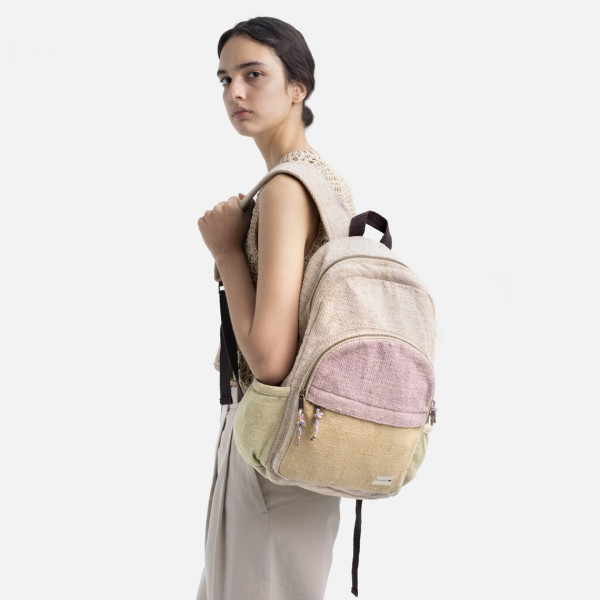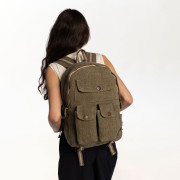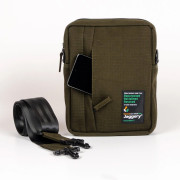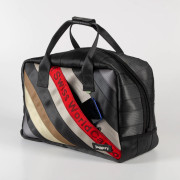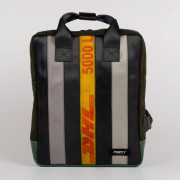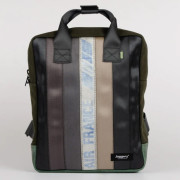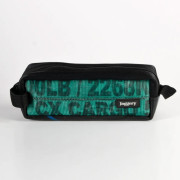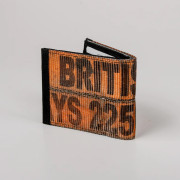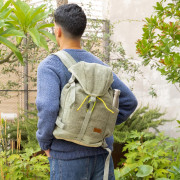No products
Product successfully added to your shopping cart
There are 0 items in your cart. There is 1 item in your cart.
HEMPER ANNAPURNA LILAC AND PISTACHIO BACKPACK - Handmade hemp and cotton backpack dyed with natural dyes. The backpack has 4 outside pockets, one of which has a flap. Ehe inside has a compartment for computers up to 15". The side pocket has a piece to hang things or put pens in.
The metal YKK zips have mountain rope as a puller.
This product is no longer in stock
More info
HEMPER ANNAPURNA LILAC AND PISTACHIO BACKPACK
In the fixing you use the residual rope, so the color and shape of the rope may vary from the one pictured.
Dimensions in cm: 34 x 44 x 11
Mild cold wash with neutral soap.
Hemp and cotton fabric made in the frames of Mohan. The backpack is handmade in the laboratory of Narendra in Thamel.
SUSTAINABILITY REPORT:
Water: 42liters - 42% saved
Toxic substances: savings of 24
Waste: 0,04kg of waste
People: 33 people involved
CO2: 12,92kg
Powered by BCOME
THE HEMPER PROJECT:
Hemper is not just a brand, but a project. A project that talks about sustainability, slow fashion and fair trade.
Their production has led to several groups of hemp craftsmen to establish alliances that have never existed before (due to social and geographical differences) to create its own supply chain and achieve a level of autonomy that goes beyond Hemper.
Hemper works with Nepalese artisans and raw materials.
SUSTAINABILITY:
From raw materials (a wild plant native to the Himalayas) to processing, the circularity of their production never abandons its origins: Nepal.
Their collaboration implies the conservation of both natural ecosystems (hemp grows wild in the Himalayas, is not cultivated artificially) and the cultural heritage of their Nepalese collaborators, threatened by globalization, from faster and cheaper textile materials and techniques.
PACKAGING:
The history of their packaging is also very fascinating. They recover bags of rice and turn them into bags that will then contain the products.
COLORS:
Speaking instead of colors, all their products are dyed with natural colors.
For thousands of years natural dyes have been used to color and customize all kinds of products. Through fruits, peels, minerals, roots, plants.
It’s an almost magical craft process, something that synthetic alternatives don’t offer.
In addition to caring for the environment, it is a way of expressing creativity and connection with nature. The results are never accurate and one product is never identical to the other, because depending on the type of water used, or the period of the year in which the material was chosen for dyeing, this can influence the final result.

